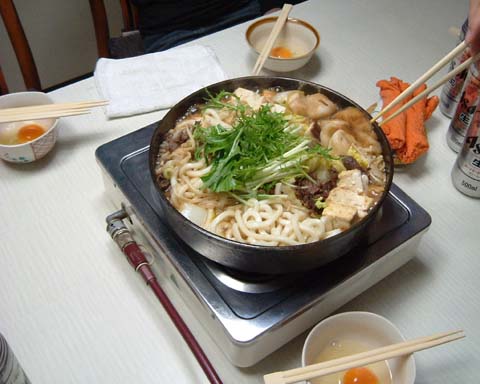Facts About Nabemono
Nabemono, commonly known as nabe, is a cherished Japanese hot pot dish ideally suited for colder months. Picture a pot brimming with delectable ingredients simmering right at your dining table, thanks to modern portable stoves. This communal meal allows everyone to select their favorite ingredients from the pot, savoring them with the flavorful broth or a delectable dipping sauce.
There are two main styles of nabemono in Japan: the lightly flavored broths like yudofu and mizutaki, and the more robustly flavored ones like sukiyaki and oden. Traditionally, these dishes are prepared in either clay or cast iron pots. Clay pots excel at retaining heat, while cast iron pots ensure even heat distribution. These pots are placed at the center of the table, making the meal a communal and interactive experience shared among family and friends.
Each region in Japan offers its own variation of nabemono, incorporating local ingredients and flavors. Some popular varieties include:
- Chankonabe: Often associated with sumo wrestlers, it is packed with protein-rich ingredients.
- Motsunabe: Made with beef or pork offal, it offers a hearty meal.
- Oden: A winter favorite, featuring ingredients such as boiled eggs, fish cakes, and daikon radish.
- Shabu-shabu: Thinly sliced meat and vegetables are swirled in the hot broth.
- Sukiyaki: Thinly sliced beef cooked with vegetables in a sweet and savory broth.
- Yosenabe: A mix of seafood, meat, and vegetables in a simple broth.
- Yudofu: Tofu simmered in a light broth, often accompanied by dipping sauces.
To enhance the flavors, nabemono is frequently paired with sauces and condiments like ponzu, a citrus-based soy sauce, gomadare (sesame sauce), and sometimes even beaten raw egg. Each region adds its own twist, such as using salmon in Hokkaido, venison in Chugoku, and even fugu (pufferfish) in Kyushu.
